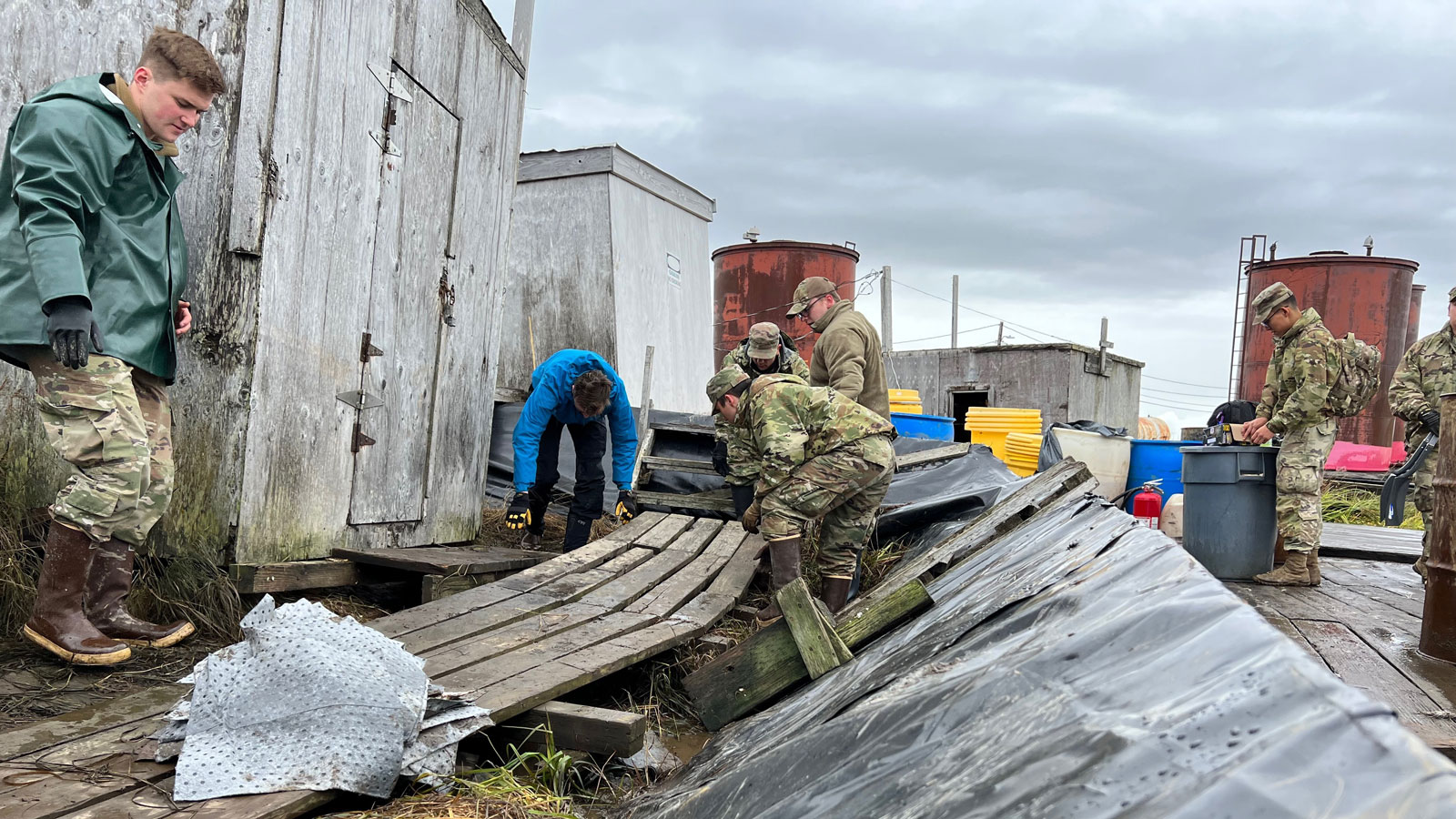This past September, the remains of Typhoon Merbok wreaked havoc on Alaska’s west coast.
The region is no stranger to big storms. But the waters in the North Pacific were unusually warm this year. So Merbok formed much closer to Alaska than most typhoons do.
Rick Thoman is with the International Arctic Research Center at the University of Alaska Fairbanks. He says by the time the storm slowed down over colder water, it was relatively close to shore. And damage from the wind was severe.
“All that wind basically acts as a plow, pushing the water north. And so in many communities, we saw water levels at or near the highest of record,” he says.
If Merbok had hit later in the year, sea ice could have helped dampen the waves before they reached shore, and frozen ground would have helped prevent erosion. But the storm hit early.
“So no sea ice, no frozen ground … to even offer a modicum of protection against the wind and waves,” Thoman says.
The storm caused massive erosion and flooding. And global warming makes it more likely it will happen again — bringing yet another threat to a place that already has one of the harshest climates in the world.
Reporting credit: ChavoBart Digital Media
Source link


